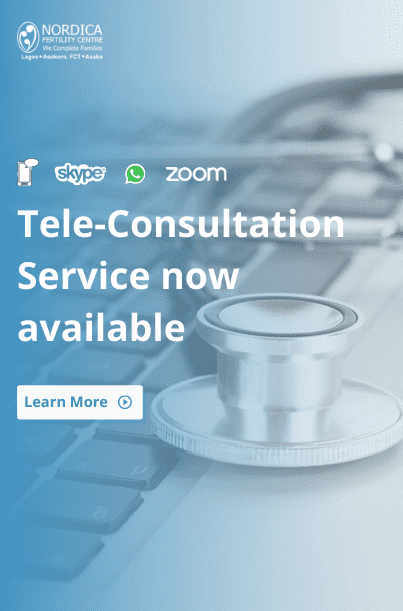Fertility Talk With Dr Abayomi Ajayi: Choosing How To Treat Infertility
Fertility Talk With Dr Abayomi Ajayi: Choosing How To Treat Infertility

For couples who are unsuccessful in trying to conceive, advancing infertility research is encouraging even though current infertility treatments for women can be invasive and painful and treatments for men can be awkward and uncomfortable. In so many ways fertility experts in the world are busy creating ways to make these intimate and emotionally intense hassles into a life-altering joy.
Basically, the stereotypical thought regarding infertility is that the problem lies within the woman’s physiology. This is because women’s reproductive organs can be more easily damaged than men’s. About 40 per cent of the time, however, infertility is due to a male factor, leaving 60 percent to women, and in 20percent, the two parties are responsible.
Particularly in Nigeria, but certainly all around the world, pockets of the population are at high-risk for infertility. The problem rests mostly with populations where women have contracted a sexually transmitted disease in the past or they have delayed childbearing for certain reasons. Physical causes for infertility in women include scarring on the cervix, uterus, or tubes; blocked tubes; and problems with ovulation or the menstrual cycle. Male organs are much more easily damaged by mumps, swelling of the testicles, or a varicocele (a large varicose vein on the testicle), that all can cause a lower sperm count. For couples desperately trying to conceive, any additional help they can receive is a relief.
Couples going through any number of infertility treatments are more than likely going to try an expensive procedure, such as in vitro fertilization or artificial insemination. Giving couples even the slightest chance of improving the probability of conceiving is seen as a great favour. This is so because infertility is an emotionally charged situation. Seeing a couple go through the process is distressing. But in seeing the results, there can be emotions from both ends of the spectrum. If the treatments do not work, the couple is devastated. If the procedures do work, the couple is ecstatic.
If I had to advise any couple seeking assisted reproduction technique, I’ll most likely ask them to choose the treatment option which maximizes their chances of conceiving quickly. This is so because traditional treatment for infertility usually involved a logical step wise approach. First, a diagnosis is made to find out what the problem is. Next, an attempt is made to try to fix it using a progressively escalating approach. Medications are tried first. If this fails, surgery is tried and if this too fails, then do we go on to Intrauterine Insemination (IUI), and if this ultimately fails, and the patient is still not fed up, we go in for IVF.
While all this is logical, and looks great on paper, the fact remains that it often does not work out well in real life. The approach is time consuming, and patients get fed up and drop out of treatment rather than move on to the next step. This can be a real tragedy, because these are often patients who could have achieved pregnancy with IVF. This approach might be reasonable for some couples, but you cannot use a “one size fits all” approach.
The point here is that there is a price you pay for everything, and the price you pay for this sort of methodical logical approach is an opportunity cost.
There was once a very successful and very busy couple. The wife was 29 years old and said she wanted a baby quickly. Money was no object and she wanted IVF. She wanted her first baby by the time she was 30, and did not want to waste time. She could get pregnant in her own bedroom, but she preferred IVF as she didn’t want to waste time. This was a very unusual request, and I was surprised, but in retrospect this approach made sense. They wanted more control over their lives, including their reproductive decisions. Why should they have to depend upon nature’s vagaries when they don’t need to? After all, nature is not very efficient at producing babies, and if they can give nature a helping hand, then why not do so?”
They saw no risk in performing IVF – either to the woman or to the baby. As a safe and effective treatment, IVF has very few and rare side effects, other than the financial risk. They were willing to spend the money in order to buy time. For her, it was the perfect time to have a baby – her window of opportunity.
Traditionally, IVF has been used for treating infertile couples. However, it would be equally valid to use IVF to help couples to achieve their personal reproductive goals, as long as they make a well-informed decision, and are aware of the pros and cons. An analogy would be cosmetic surgery, where surgical techniques are used to help patients to enhance their self-esteem.
Actually, if most fertility experts had a choice, the only treatment they would offer would be IVF – after all, we all want our patients to get pregnant as soon as possible. If they can do so with IVF, then why not use it first rather than as a fallback option when all else fails? It’s well known that pregnancy rates with IVF are much better for younger women than for older women, so it’s much more cost effective to do it when you are younger. It is true that doing IVF means spending considerable money. On the other hand, not getting pregnant has a considerable cost attached to it too – the drainage of emotional energy and the time spent waiting and hoping. IVF may be more cost effective and time effective for many patients.
Equally importantly, IVF gives infertile couples peace of mind that they tried their best – that they gave infertility treatment their best shot. This peace of mind can be priceless! In the past, IVF was considered to be the treatment of “last resort” – and was reserved for patients who had failed all other treatment methods. Today, it is often the treatment of first choice, because it maximizes the couple’s chance of conceiving quickly, no matter what their medical problem is.
Ideally, the best option would be to allow couples to choose for themselves. Where there are options, the responsibility for deciding depends upon them. It can be looked upon from one specific angle. True, everything in life comes back, but time does not. This being the case, why not do IVF when you are young and can enjoy your kids, rather than regret not doing it when you are old?





